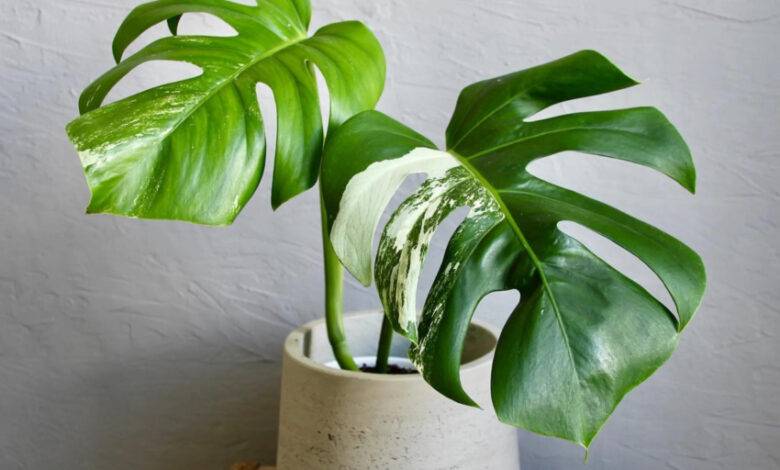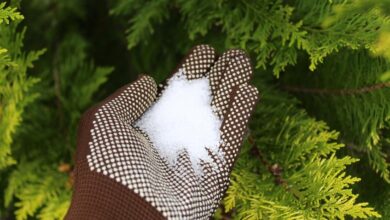Monstera Plant Care: A Comprehensive Guide for Houseplant Enthusiasts

If you’re a houseplant enthusiast, you’ve probably heard of the Monstera plant. This stunning plant, also known as the Swiss Cheese Plant, is a popular choice for indoor gardens. But, like any living thing, it requires proper care to thrive. In this article, we will provide you with a comprehensive guide on Monstera plant care. From soil and watering to light and humidity, we’ll cover everything you need to know to keep your Monstera healthy and happy. The content is presented by Homeplanidea.com
Introduction to the Monstera Plant

Before we dive into Monstera plant care, let’s take a closer look at this unique houseplant. The Monstera plant, scientifically known as Monstera deliciosa, is native to the rainforests of Central America. It’s characterized by its large, glossy, heart-shaped leaves that develop holes and splits as it matures. These holes and splits make it a popular choice among houseplant enthusiasts who love its distinctive look. Discover How to Level Your Backyard
Choosing the Right Soil
Like any plant, the Monstera requires the right soil to thrive. When choosing soil for your Monstera, look for a well-draining mix that retains moisture but doesn’t stay wet. A good mix consists of peat moss, perlite, and vermiculite in equal parts. You can also add some orchid bark or charcoal to improve drainage and aeration.
Watering Your Monstera
Proper watering is crucial for the health of your Monstera. Overwatering can lead to root rot, while underwatering can cause the leaves to wilt and yellow. The general rule of thumb for watering Monstera is to water when the top inch of soil is dry to the touch. Water thoroughly until water runs out the drainage holes, then discard the excess water. Avoid letting your Monstera sit in standing water, as this can lead to root rot.
Providing the Right Amount of Light
Monstera plants require bright, indirect light to thrive. Direct sunlight can scorch the leaves, while too little light can cause the leaves to turn yellow and drop. Place your Monstera near a north or east-facing window, or use a sheer curtain to filter the light. You can also use grow lights if you don’t have access to natural light.
Maintaining the Right Humidity Levels
Monstera plants thrive in high humidity levels. Aim for a humidity level of around 60% for optimal growth. You can increase humidity levels by placing a humidifier near your Monstera or by placing a tray of water near the plant. You can also mist the leaves regularly to provide extra moisture.
Fertilizing Your Monstera
Fertilizing is an essential part of Monstera plant care. Use a balanced, water-soluble fertilizer every four to six weeks during the growing season (spring and summer). Dilute the fertilizer to half-strength to avoid overfertilizing, which can burn the roots. You can also use organic fertilizers like worm castings or fish emulsion.
Propagating Your Monstera
Propagating your Monstera is a great way to expand your collection or give away cuttings to friends. You can propagate your Monstera through stem cuttings or air layering. Stem cuttings are the easiest and most popular method. Simply cut a stem below a node and place it in water or soil. Keep the cutting in a warm, humid environment until roots develop.
Dealing with Pests and Diseases
Like any plant, Monstera is susceptible to pests and diseases. The most common pests that attack Monstera are spider mites and mealybugs. To prevent and control pests, regularly inspect your Monstera for any signs of infestation, such as webbing or small white bugs. You can use insecticidal soap or neem oil to control the pests. As for diseases, root rot is the most common problem with Monstera plants. To prevent root rot, avoid overwatering and make sure the soil has good drainage. If you notice any signs of root rot, such as yellowing leaves or a foul odor, you may need to report your Monstera in fresh soil.
Pruning Your Monstera
Pruning is an essential part of Monstera plant care. Regular pruning helps promote healthy growth and prevents your Monstera from becoming too leggy or overgrown. When pruning your Monstera, use clean, sharp scissors or shears and make clean cuts just above a leaf node. You can also remove any yellowing or damaged leaves to improve the overall appearance of your plant.
Displaying Your Monstera
Monstera plants make excellent indoor plants and can add a tropical vibe to any room. You can display your Monstera on a plant stand or in a decorative pot that complements its distinctive look. You can also train your Monstera to climb a trellis or moss pole, which can add a unique touch to your indoor garden.
Conclusion
In conclusion, Monstera plant care requires attention to detail and proper maintenance. From choosing the right soil and watering to providing the right amount of light and humidity, there are several factors to consider when caring for your Monstera. Regular pruning and pest control are also essential for promoting healthy growth and maintaining a vibrant appearance. With proper care, your Monstera can thrive and become a beautiful addition to your indoor garden.




